- Home
- Values in Painting
Every Artist Needs to Know How to use Values in Painting
Color is fun, but using values in painting is what creates successful artwork.
Values are the backbone of strong, attractive paintings! We can use many colors in our paintings, but values are the structure of a painting.
Contrasting values attract people to our paintings.
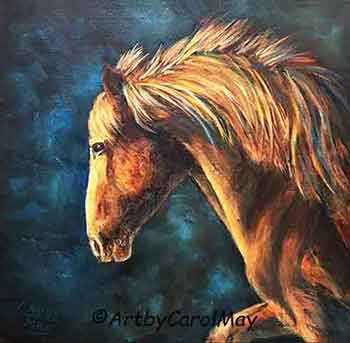 Values create strong paintings.
Values create strong paintings.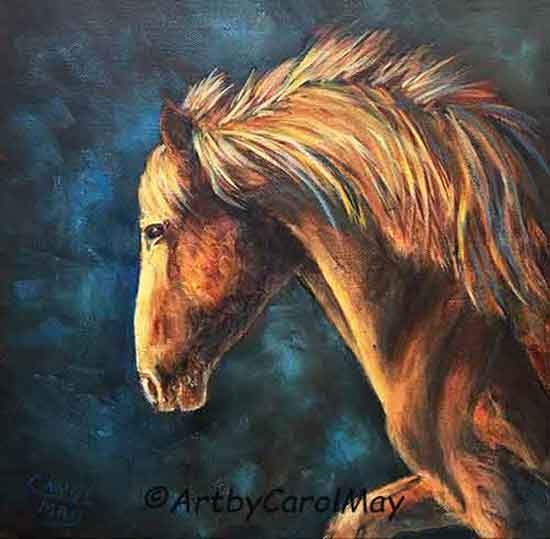 Values create strong paintings.
Values create strong paintings.What Are Values In Painting?
Values are the light and darkness of colors. The value scale in art has nine steps of grey between white and black.
 The value scale
The value scaleWhat Value Are the Colors?
Different colors absorb and reflect different amounts of light.
Colors reflect the light they don't absorb. We see the light they are reflecting and that's what makes the colors.
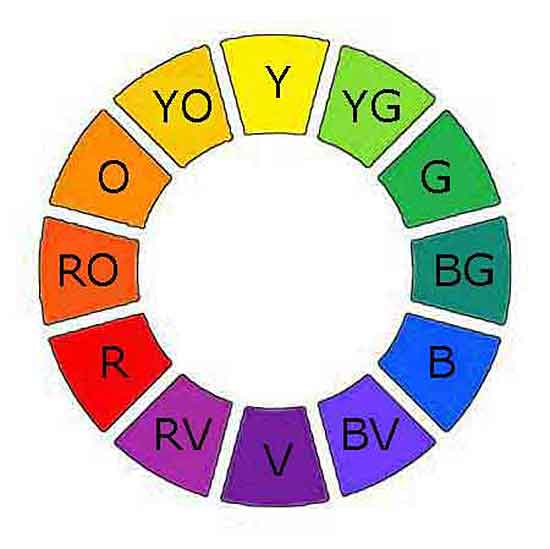 Artist color wheel
Artist color wheel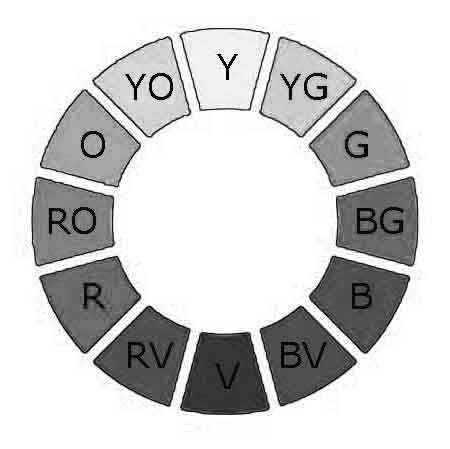 Grey-scale color wheel
Grey-scale color wheelYellow reflects light more than any other color. Lots of light bounces back off yellow to
our eyes. That makes yellow look light, a #1 on the value scale.
Purple or violet is the darkest color. It adsorbs most of the light rays that shine on it. Very little light bounces back to us. So, purple looks dark, a #9 on the value scale.
All the other colors fall in-between number 1 and 9 on the value scale.
The color wheel is an important tool for the painting artist.
Values Make Exciting Paintings!
We all want successful paintings.
What if a painting was all the same value? It would look very flat. Without a distinct difference between light and dark values, we could not see any forms in a painting.
A painting of all middle values has no impact. It doesn't matter how many colors are in a painting. If the values are all the same, the painting is a dud.
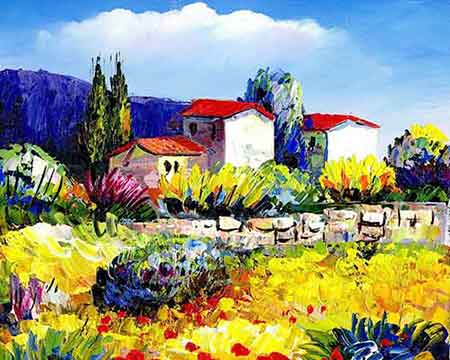 The painting uses lots of color. junjiali
The painting uses lots of color. junjiali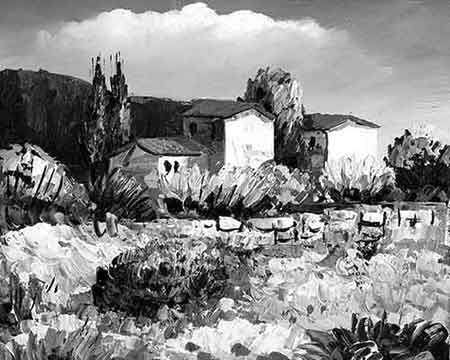 Values are the supporting structure.
Values are the supporting structure.How Do We See Values?
Artists train themselves to see values.
We learn to see the lights and darks in our subjects by squinting our eyes and then look. The
details disappear and we see the light and dark tones.
Ladies don't need any squint lines, so we just lower our eyelids, instead of squinting.
Lower your eyelids and look at the things around your room. Notice the
light and darkness of different things in the room. Train your eyes to
see the light and dark values of things around you.
Look when you are going down the road - as a passenger of course. Things will suddenly become more alive as you.
Duplicate the values we see into our paintings. It is lots of fun. It makes painting exciting!
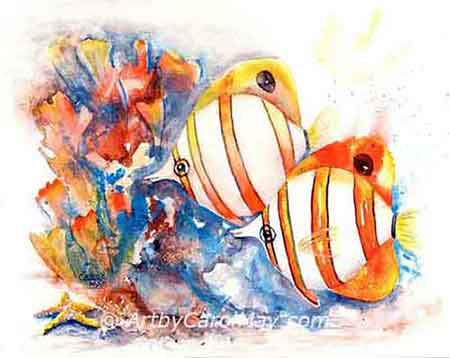 Squint your eyes and look.
Squint your eyes and look.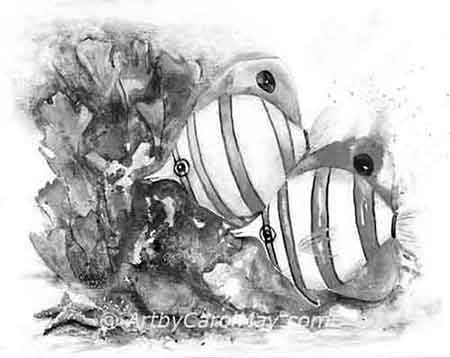 Did you see this?
Did you see this?Instead of squinting, we can see values by looking through red cellophane.
In the 1980s, I started using red cellophane from the dime store secured in a cardboard frame made from a cereal box.
Today, I still use it to check the values during the painting process. It's very handy to use instead of squinting.
 My homemade value viewer
My homemade value viewerWhat's the Best Place to Use Values in Painting?
The focal area is the place to use our lightest lights and darkest values.
A strong contrast of lights and darks will automatically draw our eyes to the focal point.
As much as I love color, a painting must have good contrast and a variety of values to be successful.
Look at the barn painting below:
- The back barn is the focal point of the painting.
- Its bright wall is the lightest value.
- The dark door creates good contrast.
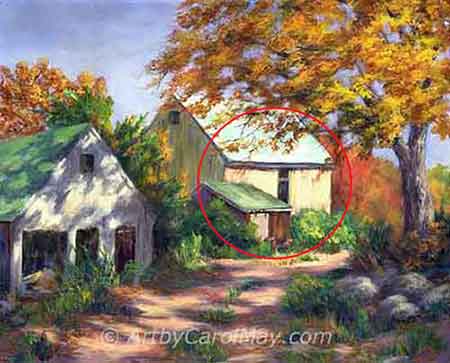 The focal area uses high contrast.
The focal area uses high contrast.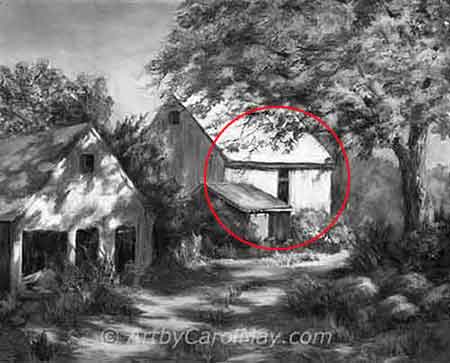 See the contrast in the grey-scale.
See the contrast in the grey-scale.The contrast of the values in painting, saturated colors, soft and hard edges plus detail are all tools. Artists use them to draw the viewer's eyes into the focal area.
How Do We Plan the Values?
A good painting starts with a plan.
When we are planning a painting, concentrate on getting at least three different values into the painting.
We don't have to use all nine values in every painting. But we make sure there is a definite contrast in the values. That's what makes an attractive painting.
Repetition is boring, so make each part of the painting a different size and a different value.
Good composition uses variety.
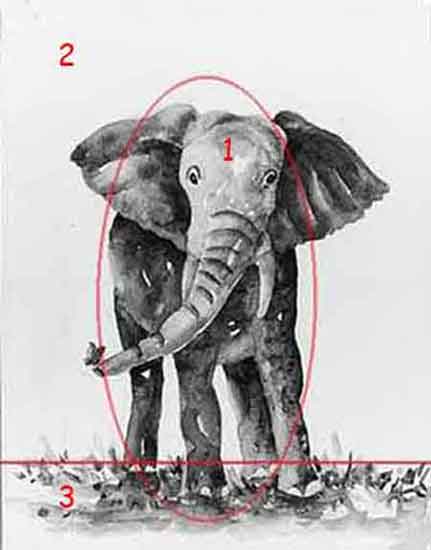 Vary the size and value of each part.
Vary the size and value of each part.- The elephant is the
largest and basically the darkest element.
- The background is medium sized and a light, contrasting value.
- The foreground is the smallest area with a mixture of medium values.
How Do We Adjust Values for Painting?
We may of course use different colors to get different values.
But we can adjust the value of colors. There are three ways to adjust the value of a color.
Add white to create tints that raise the value. Add black to create shades that lower the value. Mix a color with its compliment to subdue it and lower the value.
These three techniques adjusted the values in the painting below.
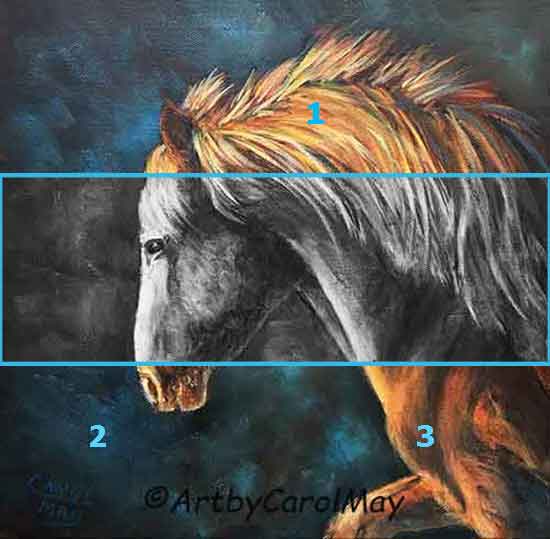 Three ways to change the values.
Three ways to change the values.- The colors in the mane were tinted with white to lighten their values.
- The value of the background was shaded with a black to lower the value.
- Orange was subdued with its blue compliment to create the shadows.
The grey-scale shows the effect of the three value adjustments.
Do Values Affect Perspective?
There are so many ways artists use values.
Values can be used to create texture. We can use them to separate the items in our paintings. We use values to create the form of three-dimensional objects on a two-dimensional painting surface.
Artists paint aerial perspective by adjusting the values.
In nature things appear lighter when they are far away. This is because particles in the air reflect light and make everything look lighter in the distance. It's called aerial perspective.
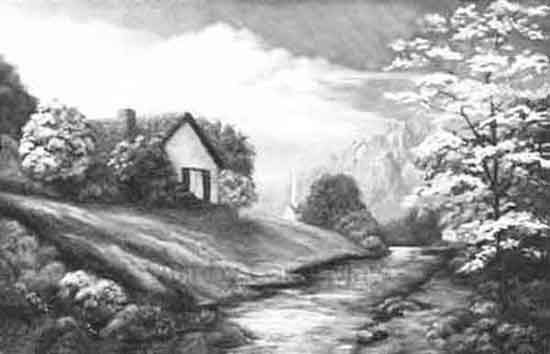 Aerial perspective makes distant values lighter.
Aerial perspective makes distant values lighter.How do artists create aerial perspective? We paint darker values in the front of the painting. Then paint the values lighter toward the back of the painting.
The painting above portrays aerial perspective. The mountains in the background appear much lighter than the foreground landscape.
Painting a landscape using values.
Do Artists Have to Follow the Rules?
Artists have the freedom of color. There is no rule that says a person has to paint something its actual, natural color. Color is a wonderful gift from God that makes painting lots of fun!
A painting works
as long as we use values.
Dolphins in nature are actually gray. Plain old gray is boring to me, as an artist. So, I painted these dolphins pink and purple instead of gray.
The values made the painting work, regardless of what colors were used.
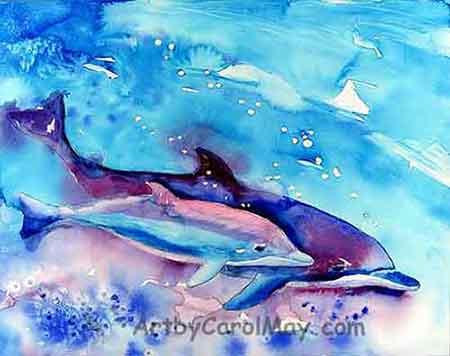 Artists don't have to paint natural colors.
Artists don't have to paint natural colors.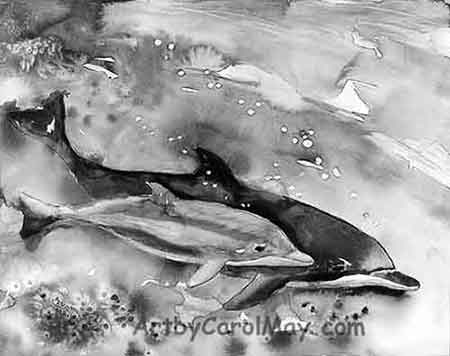 The values make the painting work.
The values make the painting work.





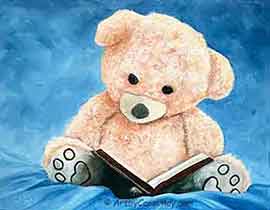 Are you eager to learn how to oil paint? What are the essential supplies for oil painting? What do we need for clean-up and how long do oil paintings take to dry? Learn the rules of oil painting and t…
Are you eager to learn how to oil paint? What are the essential supplies for oil painting? What do we need for clean-up and how long do oil paintings take to dry? Learn the rules of oil painting and t…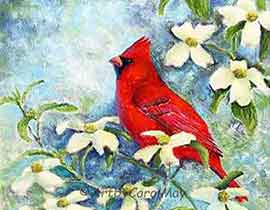 How do we create a focal point in art? Where do we put the focal point? How do we find the focus of an artwork? Should all paintings have a center of interest or can they have more than one? Learn fro…
How do we create a focal point in art? Where do we put the focal point? How do we find the focus of an artwork? Should all paintings have a center of interest or can they have more than one? Learn fro…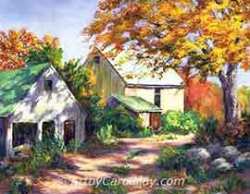 Art elements and principles appear over and over in good paintings. The elements and principles work together for us to create successful artwork. Art principles are the rules that govern how an artis…
Art elements and principles appear over and over in good paintings. The elements and principles work together for us to create successful artwork. Art principles are the rules that govern how an artis…